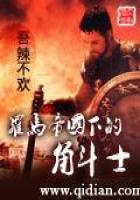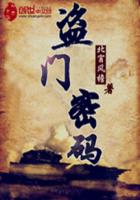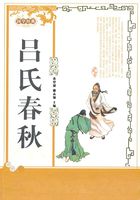In the fifteenth century the Seine embraced five islands within the purlieus of Paris:the Louvre,on which trees then grew;th e-aux-Vaches and th e Notre-Dame,both uninhabited except for one poor hovel,both fiefs of the Bishop(in the seventeenth century these two islands were made into one and built upon,now known as th e Saint-Louis);finally the City,having at its western extremity the islet of the Passeur-aux-Vaches—the cattle ferry—now buried under the foundations of the Pont Neuf.The City had,in those days,five bridges—three on the right:the Pont Notre-Dame and the Pont-au-Change being of stone,and the Pont-aux-Meuniers of wood;and two on the left:the Petit-Pont of stone,and the Pont Saint-Michel of wood—all lined with houses.The University had six gates built by Philip Augustus,namely—starting from the Tournelle—the Porte Saint-Victor,the Porte Bordelle,the Porte Papale,the Porte Saint-Jacques,the Porte Saint-Michel and the Porte Saint-Germain.The Town also had six gates,built by Charles V,namely—starting from the Tour de Billy—the Porte Saint-Antoine,the Porte du Temple,the Porte Saint-Martin,the Porte Saint-Denis,the Porte Montmartre and the Porte Saint-Honoré.All these gates were strong,and at the same time handsome—which is no detriment to strength.A wide and deep fosse,filled during the winter months with a swift stream supplied by the Seine,washed the foot of the walls all round Paris.At night the gates were shut,the river was barred at the two extremities of the town by the massive iron chains,and Paris slept in peace.
From a bird's-eye view,these three great divisions—the City,the University,and the Town—presented each an inextricably tangled network of streets to the eye.Nevertheless,one recognised at a glance that the three fragments formed together a single body.You at once distinguished two long,parallel streets running,without a break or deviation,almost in a straight line through all these towns from end to end,from south to north,at right angles with the Seine;connecting,mingling,transfusing them,incessantly pouring the inhabitants of one into the walls of the other,blending the three into one.One of these two streets ran from the Porte Saint-Jacques to the Porte Saint-Martin,and was called Rue Saint-Jacques in the University,Rue de la Juiverie(Jewry)in the City,and Rue Saint-Martin in the Town,crossing the river twice,as the Petit-Pont and the Pont Notre-Dame.The second—which was called Rue de la Harpe on the left bank,Rue de la Barillerie on the island,Rue Saint-Denis on the right bank,Pont Saint-Michel on one arm of the Seine,Pont-au-Change on the other—ran from the Porte Saint-Michel in the University to the Porte Saint-Denis in the Town.For the rest,under however many names,they were still only the two streets,the two thoroughfares,the two mother-streets,the main arteries of Paris,from which all the other ducts of the triple city started,or into which they flowed.
Independently of these two principal streets,cutting diametrically through the breadth of Paris and common to the entire capital,the Town and the University had each its own main street running in the direction of their length,parallel to the Seine,and intersecting the two'arterial'streets at right angles.Thus,in the Town you descended in a straight line from the Porte Saint-Antoine to the Porte Saint-Honoré;in the University,from the Porte Saint-Victor to the Porte Saint-Germain.These two great thoroughfares,crossing the two first mentioned,formed the frame on to which was woven the knotted,tortuous network of the streets of Paris.In the inextricable tangle of this network,however,on closer inspection,two sheaf-like clusters of streets could be distinguished,one in the University,one in the Town,spreading out from the bridges to the gates.Something of the same geometrical plan still exists.
Now,what aspect did this present when viewed from the top of the towers of Notre-Dame in 1482?
That is what we will endeavour to describe.
To the spectator,arrived breathless on this summit,the first glance revealed only a bewildering jumble of roofs,chimneys,streets,bridges,squares,spires,and steeples.Everything burst upon the eye at once—the carved gable,the high,pointed roof,the turret clinging to the corner wall,the stone pyramid of the eleventh century,the slate obelisk of the fifteenth,the round,stark tower of the donjon-keep,the square and elaborately decorated tower of the church,the large,the small,the massive,the airy.The gaze was lost for long and completely in this maze,where there was nothing that had not its own originality,its reason,its touch of genius,its beauty;where everything breathed of art,from the humblest house with its painted and carved front,its visible timber framework,its low-browed doorway and projecting storeys,to the kingly Louvre itself,which,in those days,boasted a colonnade of towers.But here are the most important points which struck the eye when it became somewhat accustomed to this throng of edifices.












